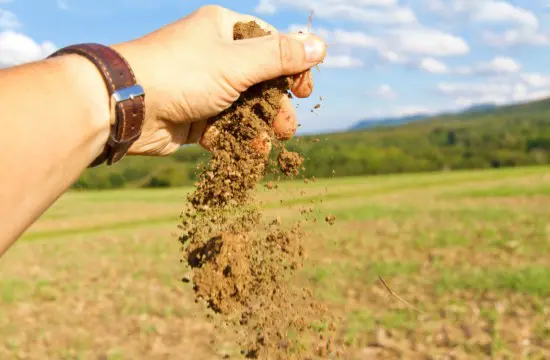We can make a lot of input decisions that impact yield – what seed we’ll use, how much fertilizer we’ll put down – but at the end of the day, a crop can only be as successful as the foundation we give it.
Soil health, or soil quality, is key to the success of our farms and can generally be broken down into three categories:
- Chemical: Healthy soil has a neutral pH and a variety of nutrients and organic matter.
- Biological: Healthy soil should show earthworm activity and a diverse microbe population.
- Physical: Healthy soil should exhibit various pore sizes and a large amount of pore space, as well as a large aggregate size and a lack of compaction.
By measuring the quality and composition of these three elements, soil tests are able to determine which categories are being met and which can be improved upon. Agronomists recommend combining traditional lab testing with our own observations of soil structure and biological diversity. From there, yield maps can illustrate what areas of your fields are doing well, or poorly, and create a starting point to assess differences in soil quality.
A healthy and balanced soil system can stand up to, and help your crop stand up to, a variety of stresses. Ultimately, good soil structure allows for increased water infiltration, and for nutrients to cycle more efficiently to the plant, which is critical to yield.
So how do we get there? Agronomists recommend the following practices for building good soil and maintaining a healthy balance of chemical, biological and physical properties:
- Expanding a cropping plan to include more diversity, because different crops interact with the soil differently.
- Increasing the time the crop is actively growing in the field, giving it as long as possible to have a living, working root system.
- Supporting the organic matter in our fields, giving soil microbes more to snack on as they enhance the cycling of nutrients, assist plants in grabbing nutrients from soil and help water better penetrate the soil.
- Reducing tillage impacts the stability of soil aggregates and affects the efficiency of how mobile water, nitrogen and potassium can be.
- Increasing crop residue left in the field to reduce soil erosion. Residue buffers heat and protects the soil from heavy rains, all while also helping with increasing organic matter.
- Consider animal impact on soil, whether that be through preventing overgrazing or through letting cover crops do the dual purpose work of protecting the soil and feeding livestock.
Healthy soil makes healthy crops. Understanding the composition of your field each growing season is the first step toward achieving optimal soil health that will deliver a strong yield for years to come.


